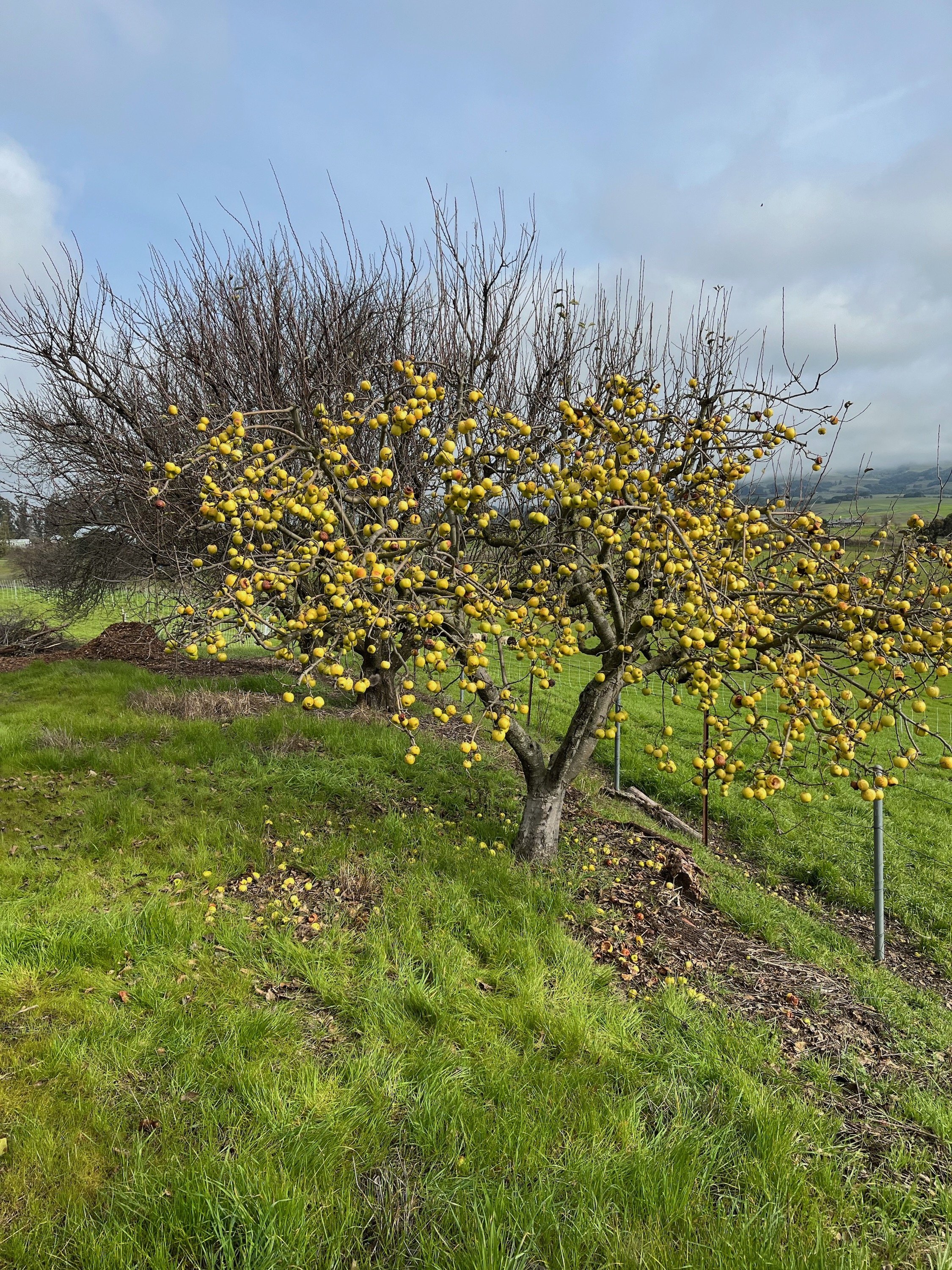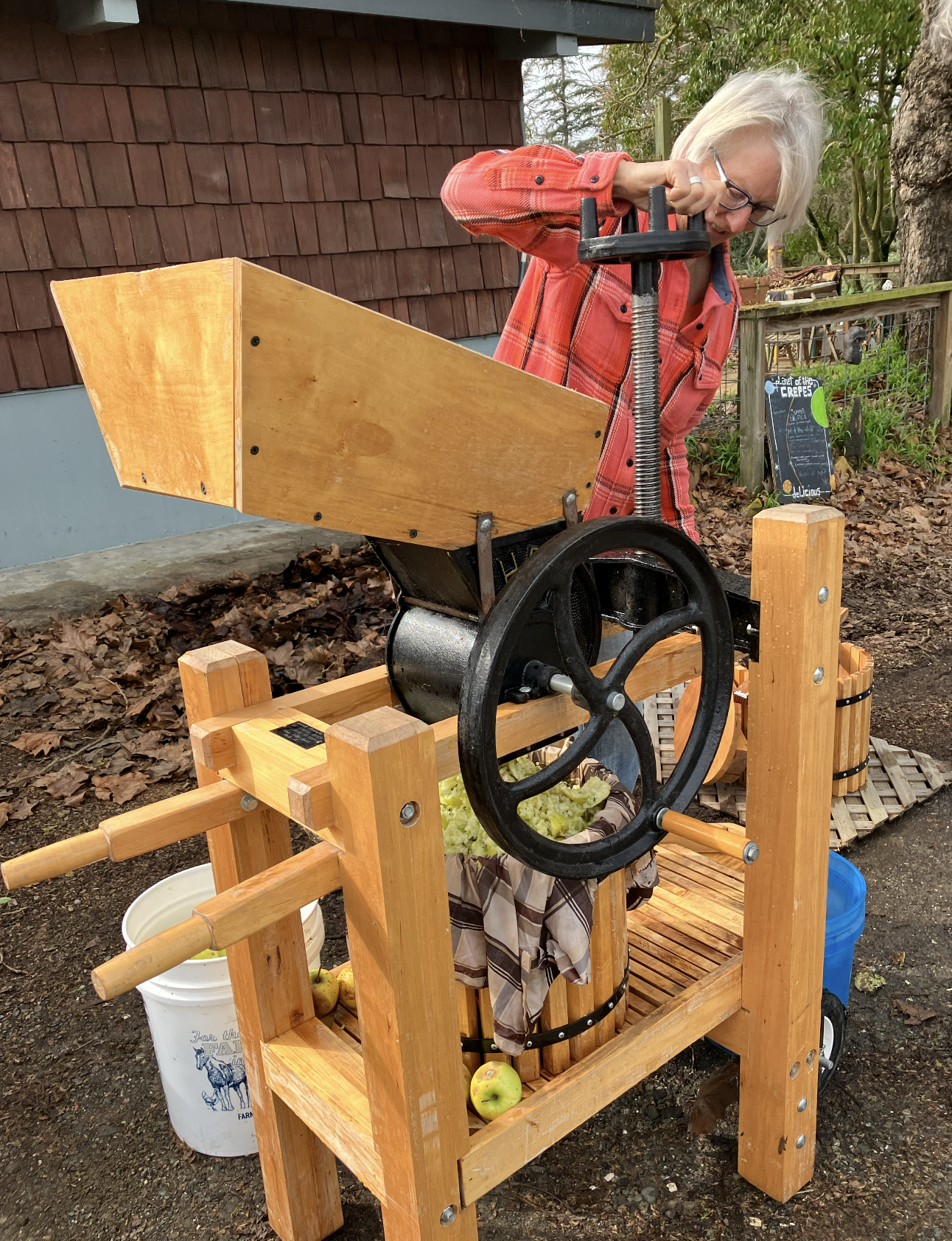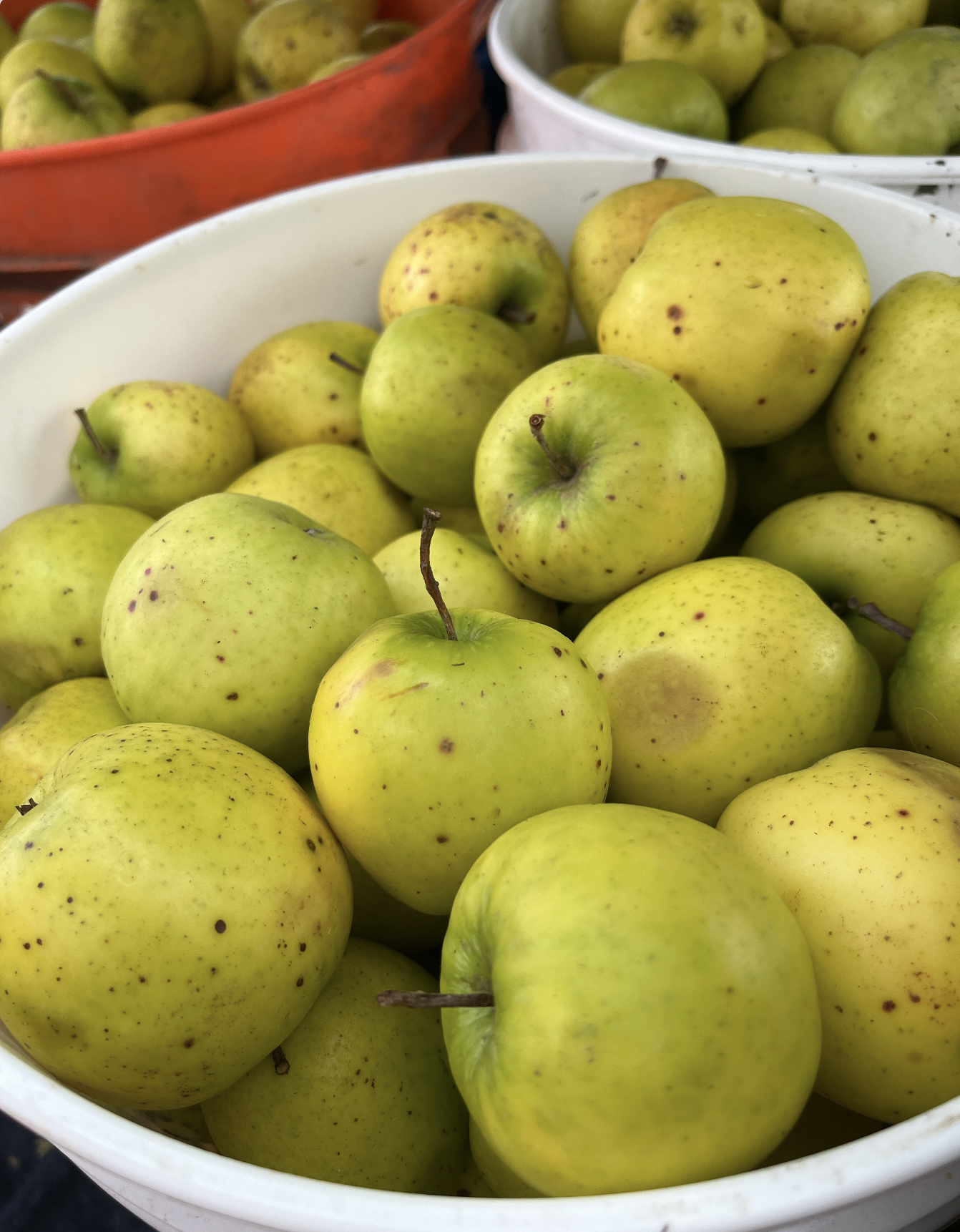Apples in February?
Last fall, people were juiced to use our apple press, on loan from Jupiter Foods!
Little did we know that the demand would extend into… February? That’s right! We caught wind of this late-producing tree by Petaluma resident D’Lynda Fischer, who harvested 8 buckets of what appear to be Granny Smith apples from a single tree in February, a small portion of what the tree had to offer.
Curious, we did a little research. With the help of our garden expert and one of our Food Security Garden Network leaders Liz Sanders, we learned that some apples are harvestable all the way into late winter, especially in more mild climates.
We also learned that warmer days will impact more than just when apples ripen. This winter, our region had fewer winter days less than 45 degrees than what is typical. This means that late season apple trees are holding more apples longer into the winter. Also, the high volumes of rain can make existing fruit, though still tasty, hold more water. This can decrease not only flavor but also shelf life of a crop. True to this fact, we found that the juiced pressed from these late-season apples had a much more mild flavor than the same variety of apples that were harvested back in the fall. Lastly, with fewer “chill days”, next season's apple crop may be impacted negatively because different varieties of apple (and other fruit trees) have different needs for cold temperatures and dormancy periods in order to fruit well.
If you are one of the people lucky enough to have late season apples, hit us up at the Deviled Eggery - use of the apple press is free (although we are always grateful to accept a sample of your juice, you know, for research).
Thank you Elizabeth Sanders for contributing your expertise to this story.



